An essential guide for cooking Japanese food at home. Learn the basics of how to build your pantry, substitutions, meal planning, cooking tools, how to balance flavors, and more!
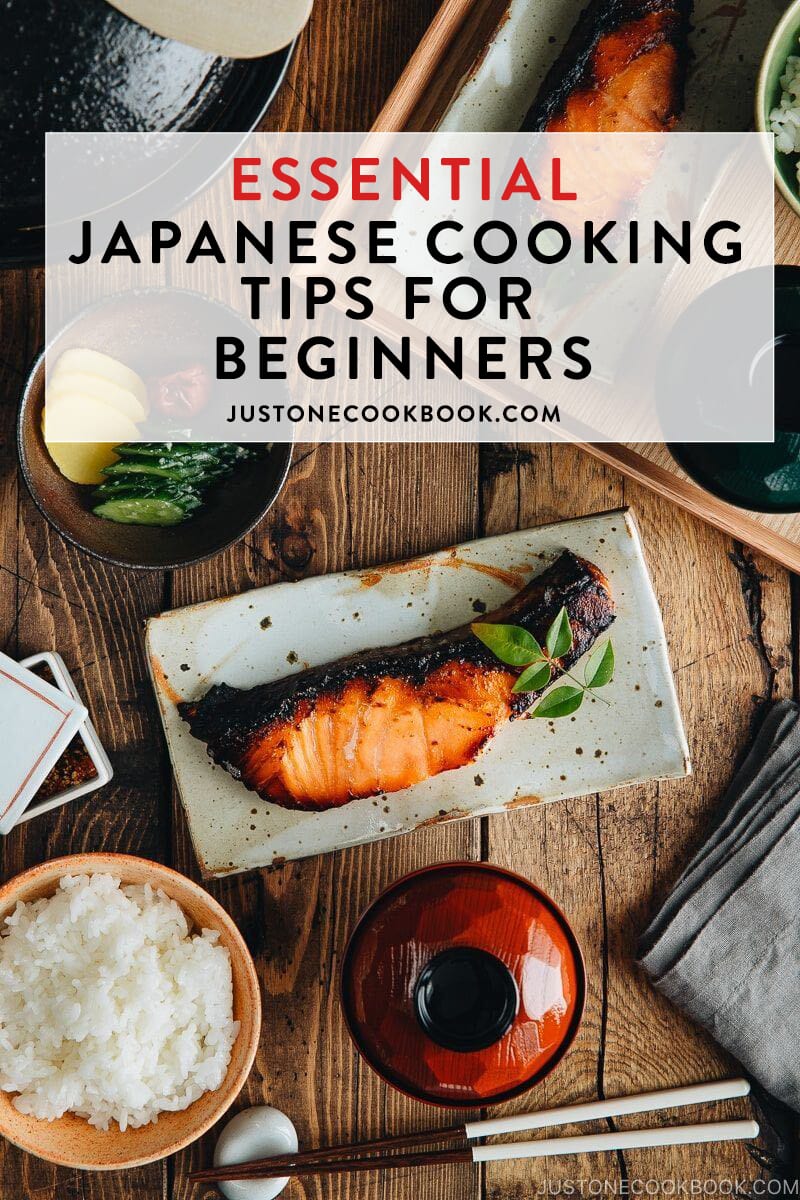
Whether you’ve just recently discovered Japanese cooking or been rustling up delicious meals for a while, our goal at Just One Cookbook is to help you build your confidence in the kitchen, and ultimately become a better cook.
First and foremost, it is important to understand the concept of Japanese home cooking. There’s a lot more to Japanese food than sushi, ramen, tempura, and teriyaki. There are times when we serve a full spread of dinner consisting of rice, soup, grilled fish, vegetable sides, and pickles. But there are also nights when we count on 5-ingredients rice bowls, fried rice using leftovers, simple pasta, freezer curry, and quick comfort foods made entirely from pantry items.
In my own experience, cooking Japanese food anchors on an all-embracing approach that focuses on variety, seasonality, balance, and attention to detail. We take food seriously because it is one of the biggest enjoyment in life! So I’d encourage you to keep these principles in mind.
By all means, this is not a comprehensive cooking lesson but more of a quick guide. We also included a lot of useful resources with links. I sincerely hope that these tips will arm you with the elemental knowledge and give you a good start in Japanese cooking.
Cook bravely, eat heartedly, and share generously!
10 Essential Cooking Tips to Help You Be A Better Cook
Here is a quick outline of what you can find in the article below:
Click to jump to ingredients:
- Build your pantry with basic Japanese staples
- Substitutions for hard-to-find ingredients
- Meal prepping & shopping
- Japanese cooking tools & how to make use of what you have
- Get a good understanding of a recipe
- Learn the basic of knife skills
- Temperature control (heat and oil)
- Balance the flavors
- Present the food: how to make things look good
- Adapt & improvise
- Practice
1. Build Your Pantry with Basic Japanese Staples
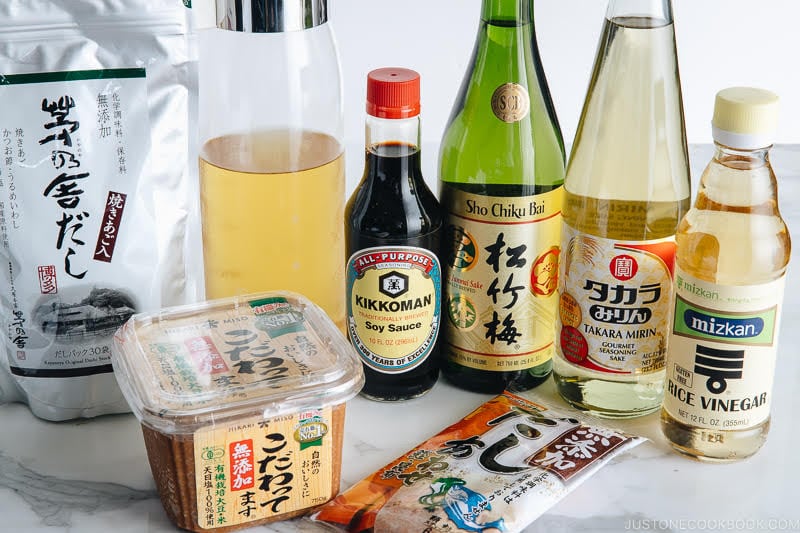
When you’re starting out in new cuisine, the very first thing to do is to build your pantry. For Japanese food, the key staples always include rice and noodles such as soba, udon, ramen, pasta, etc.
Next, you’ll need essential condiments, spices, and dry goods. They are mainly soy sauce, mirin, sake, miso, rice vinegar, and dashi (soup stock). Each of these ingredients is often used in combination to provide fundamental flavors to Japanese food. Once you have them in the pantry, you’ll be able to cook up a wide variety of authentic Japanese dishes.
Read:
- Everything You Need to Know About Japanese Rice
- 6 Must-Have Condiments to Make Your Favorite Japanese Food
- 26 Japanese Pantry Ingredients to Add to Your Shopping List
I’ll also add toasted sesame oil, sesame seeds, and Japanese mayonnaise. The other common dry goods include kombu kelp, shiitake mushrooms, and katsuobushi (bonito flakes).
To start out, shop for what you plan to cook and eat first. When you’re ready to branch out, you can stock up on more ingredients. Reference my Pantry page for a complete list.
You can find these pantry items at major grocery stores or Japanese/Asian grocery stores. If you are living in a small town without access, then online order is your best bet.
2. Substitutions for Hard-to-Find Ingredients
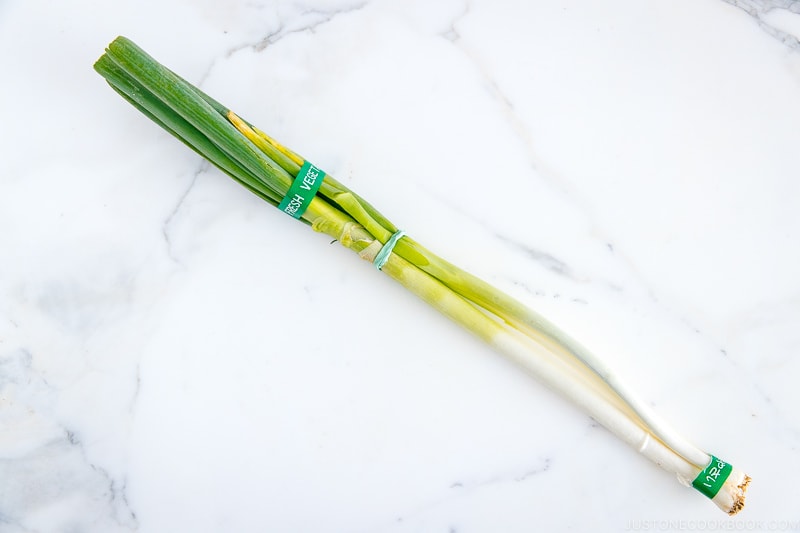
It’s true that you would come across ingredients such as burdock root, negi, aburaage, wakame seaweed, ikura (salmon roe), and mizuna leaves that are as foreign as they sound. But don’t let these unfamiliar names intimidate you! Unless they are a key ingredient in the recipe, chances are you can make do with some adaptation and produce that is available to you.
You may not be able to make every single Japanese dish, depending on what the recipes require. But most of the time, you can create something good and entirely fresh by working with what you can get.
For any recipes featuring meat, you can try them out with other proteins. If you’re on a vegetarian or vegan diet, there’s plenty of flexibility too. Root vegetables, mushrooms, seaweed, tofu, vegetarian meat like seitan, and local greens are what you can count on!
You can also find suggestions in each of my recipes that will give you ideas on how to tweak and adapt. Looking for a halal option for sake (Japanese rice wine)? I have that covered too. So, make sure you read the tips.
Read:
3. Meal Planning for Efficiency
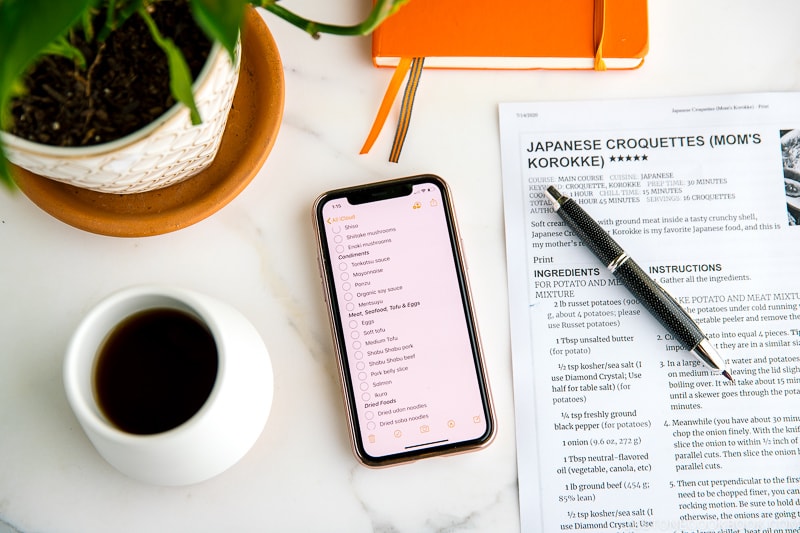
When you decide to cook Japanese food regularly, some sort of meal planning is always helpful. You don’t have to fill up the entire menu calendar, but putting down at least 3-4 main meals would help. It determines the type and the number of ingredients you will need for the week.
Once I plan out a few main menus for the week, I work on my grocery list based on this template:
- Fresh produce like meat, seafood, eggs, other protein, and dairy products.
- 2 leafy vegetables to use for the next 2-3 days.
- 3 dense vegetables (broccoli, cabbage, etc) to use after leafy vegetables are done.
- 1-2 root vegetables to use throughout for 2 the next weeks.
- Aromatics such as garlic, ginger, green onion, and fresh herbs.
- Deli meat, canned tuna, or bacon for easy sandwiches or pasta.
- Any missing pantry items like rice, noodles, pasta, condiments, spices, and dry goods.
- The extras: any other treats that make us happy.
You can use a list-making app or old fashion handwritten list. I use the Notes app on the iPhone and share it with my husband. Grocery shopping becomes easier once you have the building blocks set out.
Upon coming home, organize the refrigerator space by section. You want to see your ingredients easily, so they are being used before they rot away. Miss out something? Don’t sweat it. Make a new plan.
The idea is to plan just enough that you are not wasting food but giving yourself enough room for flexibility. In between your planned menu, check for any leftovers and use them in a throw-in-everything kind of dishes like yakisoba (stir-fry noodles), hot pots, fried rice, or stir-fries
4. Japanese Cooking Tools & How to Make Use of What You Have
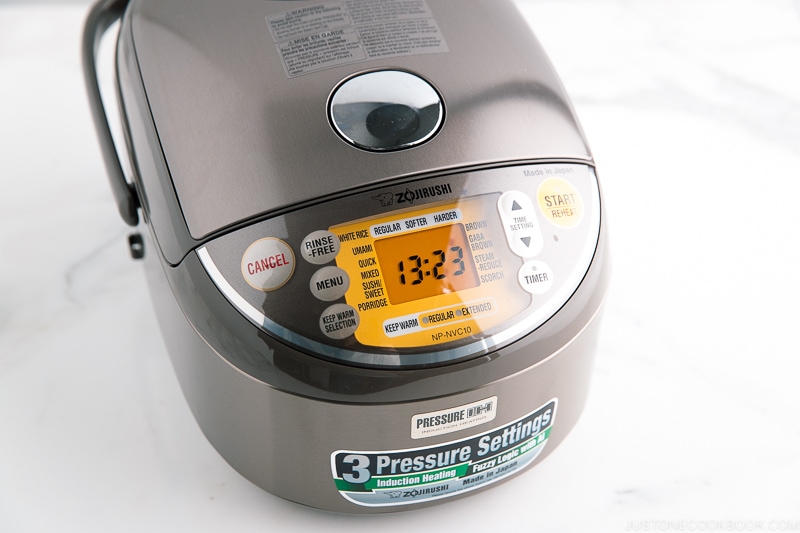
Here are the must-have cooking tools you’ll need:
- A rice cooker – Almost all Japanese households own a rice cooker. You can cook rice over the stovetop or using an Instant Pot, but I highly recommend investing in a quality rice cooker if you plan on cooking Japanese meals regularly.
- Frying pans – For all sorts of pan-frying, stir-frying, grilling, and making Japanese-western pasta dishes.
- Pots – For making miso soups, dashi (Japanese soup stock), simmered dishes, and sauces.
The good-to-haves:
- Wok or a large pan or griddle pan – ideal for stir-fries.
- Sushi making kit if you plan on making sushi.
- Donabe (Japanese earthenware pot) and portable butane stove for making hot pots.
- Pressure cooker like an Instant Pot (Read Which Instant Pot Should I Buy)
Do not feel rushed to get everything. Start with the must-have, then continue to build on something that you will be using over and over again.
Decide your purchases based on your lifestyle and budget. Whether you choose to use nonstick, stainless steel, or cast iron pans (or a variety), it is largely a matter of choice. Make use of what you have and get to know your own tools.
My oven will work differently than yours, and so do the rest of the equipment. If you have an electric stove, it tends to take a longer time to heat up than a gas stove. Temperature control can be tricky too. That’s totally OK! I used to cook in a college dorm and a small apartment too, so it’s all about getting to know how to use them. You can still enjoy sushi even without a sushi mat. Yes, just make Temaki (Hand Roll) Sushi!
Looking to upgrade your equipment? You can find my recommended cooking tools here
5. Get a Good Understanding of a Recipe
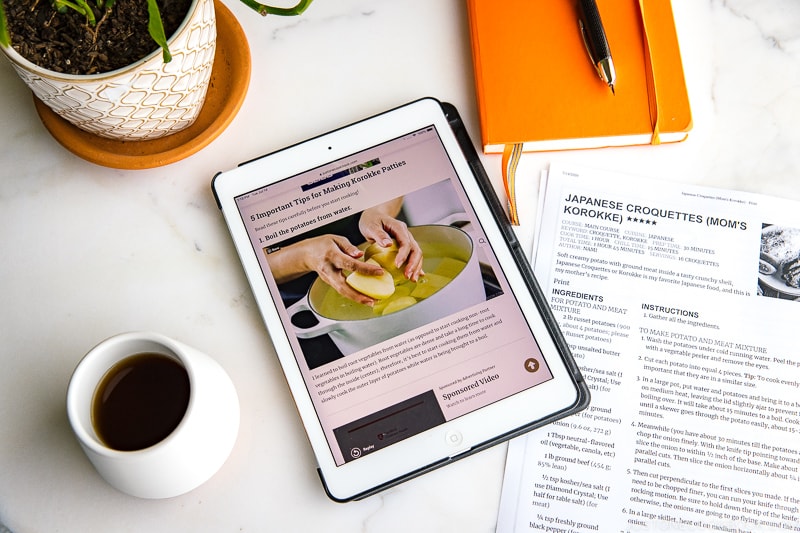
When trying out a recipe, I’m aware that most people would skip reading the tips and techniques and go straight to the step-by-step instructions. I know, who has the time to read!
But if you’re new to the cuisine or a challenging recipe, it’s worthwhile to read through the highlighted tips, techniques, and substitutions that I share in the post itself. This helps to grasp an understanding of the recipe – important take-aways, why are things being done a certain way, etc.
Most importantly, when you go through the steps and have a quick visualization of the process, you’re learning to achieve the best workflow. It’s not about following a recipe to tee but making sense of the preparation and freedom to experiment. You are ultimately saving a lot of time and preventing failures.
So, take an extra few minutes to think through what you need to do, set up a workstation, organize and prep your ingredients. This can make the process easier and less overwhelming.
6. Learn the Basic of Knife Skills
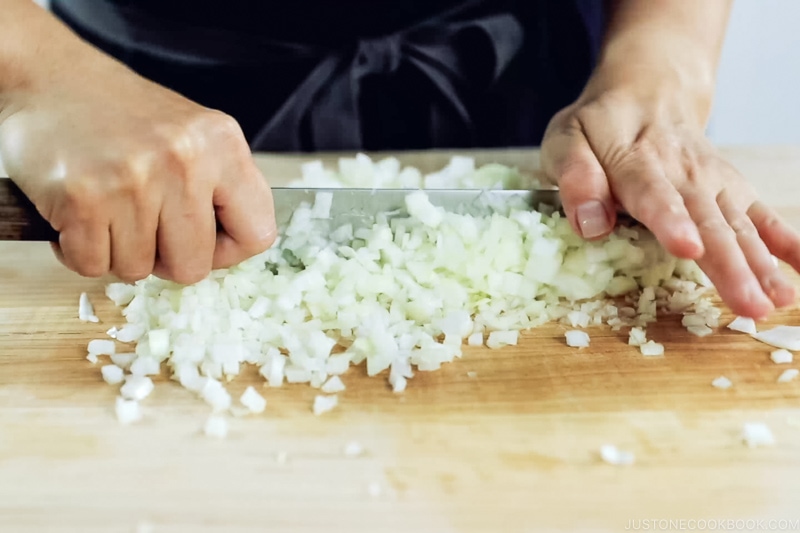
Chopping, slicing, and mincing are the very first things you do when you begin cooking. It’s something you do a lot in the kitchen. That’s why any trainee chefs are always put in charge of cutting ingredients first before they get to stand in front of the stove.
Good knife skills equal to an efficient cook. You don’t need a super expensive knife, but I recommend investing in a good, reliable knife that can last you a long time.
When cutting ingredients, the number one goal is to achieve an even, uniform size. This ensures everything cooks evenly and is done at the same time. It also helps improve the flavor, texture, and presentation of the food. Focus on that, start slow, and then practice. Speed will come in time.
In Japanese daily cooking, we also apply cutting techniques that are specific and unique to different dishes. Each cutting style is used for different ingredients and for different reasons. You can learn more about them here:
- Basic Japanese Cutting Techniques for Vegetables
- How to Slice Meat Thinly (Many Japanese dishes require thinly sliced meat)
7. Temperature Control (Heat and Oil)
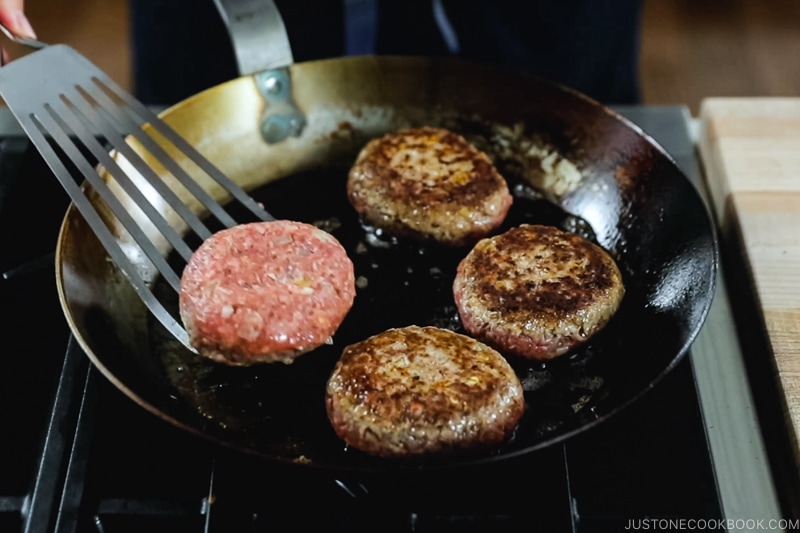
The difference between a nicely seared and soggy-looking piece of chicken teriyaki starts before food hits the pan. Fried rice isn’t fried rice if you don’t use enough oil and the heat is low. In short, heat and oil determine the texture of food.
Here are a few quick things you’ll need to know:
- Use the right oil – In general, we use canola and vegetable oil in most of Japanese cooking, which includes deep-frying. For Yoshoku (Western-influenced Japanese food) like Wafu Pasta, you can use olive oil. Sesame oil is commonly used as a finishing oil.
- Make sure your ingredients are dry – Unless you’re braising the dish, you want to make sure the ingredients are pat dry. Any wet vegetable will cool down the pan and oil right away. Make sure to remove any marinade from your meat before you place them into the hot pan. Water or liquid can also cause the oil to splatter and the meat will end up being steamed than seared.
- Get your pan and oil hot enough before putting in ingredients – Food tends to soak up the oil if it isn’t hot enough, and they’re more likely to be soggy. When you want to get your food crispy and nicely brown, make sure that both the pan and oil are hot enough.
- Use a thermometer for deep frying – Even if you’re an experienced cook, I always find a quality thermometer (this is my absolute favorite) can make a difference in determining the success of deep-fried food and grilled food.
8. Balance the Flavors
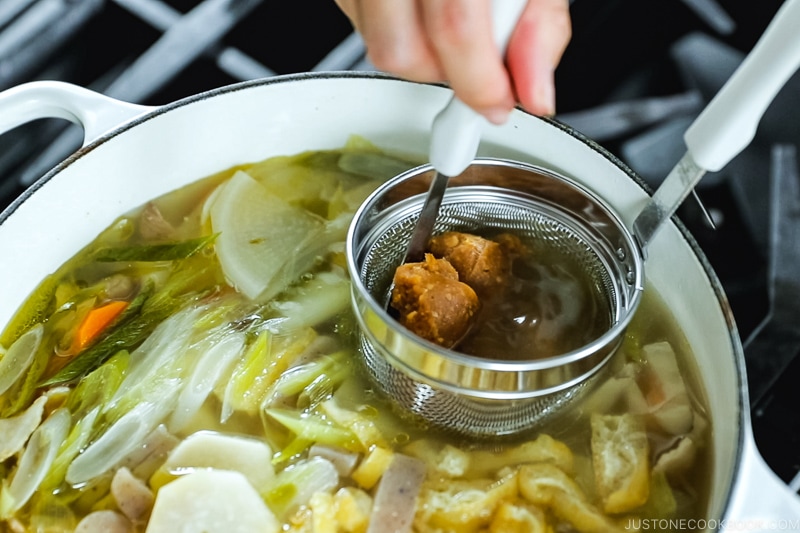
Japanese food is often being described as delicate yet full of umami.
To achieve umami, the essence of savoriness, we lean heavily on a few yet important players: soy sauce, mirin, sake, miso, kombu, bonito flakes, and dried shiitake mushrooms. Each of these ingredients is high in glutamates that give you that deep, intensely satisfying flavor. And umami works best only when we use it in combination with other basic tastes of sweet, salty, bitter, smoky, and sour.
Once you taste different Japanese dishes enough time, you’ll recognize it. Essentially, we want to achieve a balance of interplay of these flavors, even when we use them in different ratios.
There’s also an emphasis on enjoying the natural flavors of the ingredients. Be it the sweetness of cabbage, the fatty richness of salmon, or the slight bitterness of daikon radish, we want the flavors to come through instead of overpowering them with soy sauce, salt, sugar, or other seasonings.
So, how do you do that exactly? For beginner cook, follow my recipe and have your seasonings premeasured. When you have doubts, always start with a smaller amount, have a taste, then adjust.
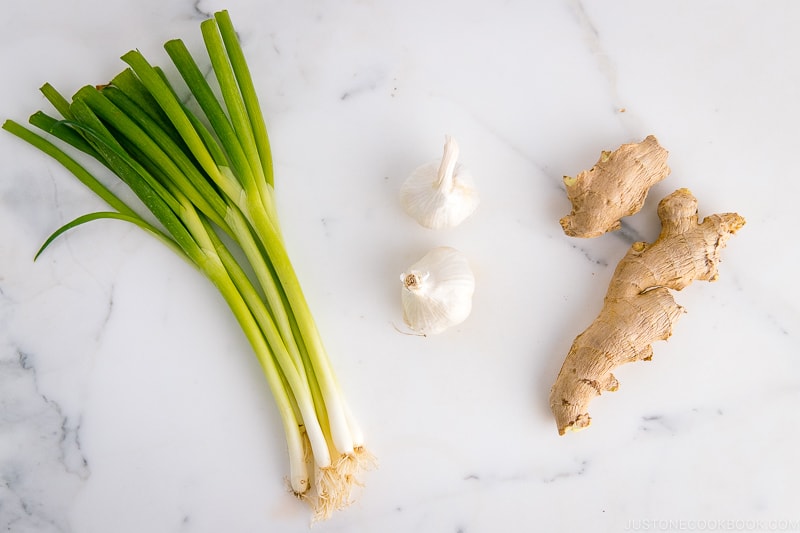
For anyone who is on a low-sodium diet, you can use more aromatics (garlic, ginger, and scallion) and cut down on salt and soy sauce to make up for the flavors. The same goes for sugar, you can choose to cut down or opt for healthier choices that work for you. Ask yourself if the flavor is too sweet or too salty, or what’s missing. Let your taste buds guide you.
9. Present Your Food
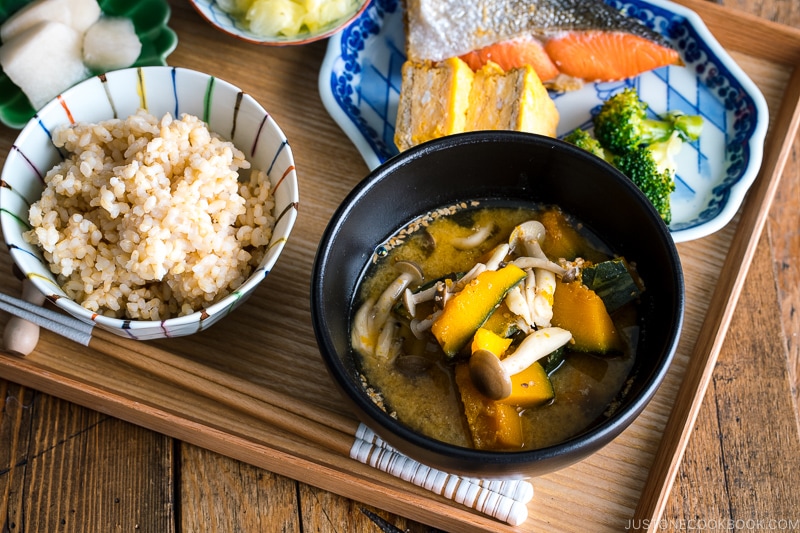
Presentation is probably one of the elements of Japanese food that stands out to most people. And it all starts from the way you cut the ingredients to temperature control to the moment you transfer the cooked food to the dish. How do you plate your food can be an individual expression.
You don’t need to be an artist but the concept of aesthetic applies: pay attention to the height, colors, the composition of the food.
There are no strict rules, but here are the simple steps you can take:
- Study images of the recipes that appeal to you – I do this for taking pictures of my food for the blog!
- Use plates and bowls with simple designs and earth-tone colors – Let the food be the center of attention. When it comes to plating plain-looking food like Chilled Tofu, then you can go with a colorful dish to bring contrast and enliven the presentation.
- Do not overcrowd the plates – Leave some room around to create a sense of balance.
- Use garnishes and toppings to create dimension and color – A sprinkle of finely chopped green onions or a gentle scatters of sesame seeds or a dash of shichimi togarashi (Japanese seven spice) can really elevate the visual of your dish.
10. Adapt and Improvise
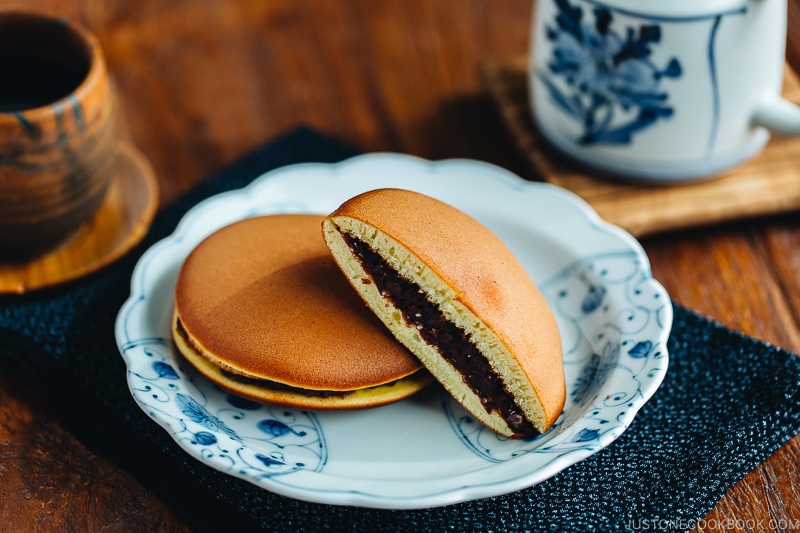
While I strive to show you how to cook authentic Japanese dishes, I want you to explore the possibility of making Japanese food even when you struggle with ingredients or finding the time.
Japanese chefs and home cooks have always been willing to adopt foreign influences, which results in the creations of many Western-influenced Japanese foods (like Hambagu, Tonkatsu, Doria, Hayashi Rice, Omurice, etc) and Chinese-influenced foods (like Ramen, Gyoza, Nikuman, etc) we are proud to call our own.
I’ve seen readers making my Dorayaki recipe with interesting fillings like Nutella, apple pie filling, and jam. A reader served the Teriyaki Salmon with chickpea, long grain rice, and a salad. Another reader used her leftover mashed potatoes and make them into Japanese croquettes (Korokke) to speed up the process. Over and over, I’ve seen people using my Japanese recipes and applying their own methods and capacity.
As long as you enjoy the end result, there’s joy in finding a way to make it your own. Will an adaptation turn out exactly like the original? Nope. Will you feel a sense of accomplishment for making it work? I bet it’s a big YES.
Practice, practice, practice!
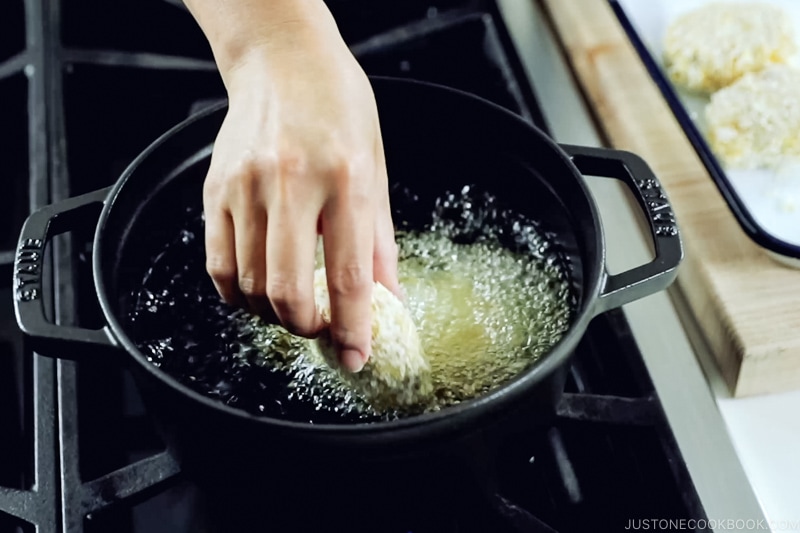
- Just start cooking TODAY – The more you spend time in the kitchen, the more you’ll pick up.
- Don’t be afraid to fail or make mistakes – Consider them valuable lessons and a great opportunity to learn.
- It takes years of practice to become a good cook – Cooking is no different than any other skill. Everyone can get there with a keen interest and a curious mind.
With all these tips, I hope you can become the master of your own kitchen, whipping up meals no matter what you have on hand, using ingredients strategically with a minimum of waste, and feeding comforting and nutritious food to your family.
Questions?
Feel free to leave a comment below and I’ll do my best to answer!










My daughter love to make Japanese foods an she some day might go to a collage in Japan so starting with food is the best way.
Hi Randall! Aww. That is fantastic!👏🏻
I am trying every recipe from Midnight Diner and loving it! Thank you! In your recipes, when it says sake, can I use cooking sake (not for drinking :))?
Hello, Karen! Aww. We are happy to hear that you are having fun cooking various Midnight Diner dishes!
Because cooking sake contains additional ingredients as well as salt, we recommend using drinking sake. You may use an inexpensive one.
https://www.justonecookbook.com/sake/
If you must use cooking sake, we recommend lowering the salt level in the recipes.
We hope this helps! 🙂
you are a real inspiration to me always thank you
Hi Catherine, Nami and all of us at JOC are so glad to hear that you’ve been enjoying the recipes and everything else that we share. It means so much to us.
Thank you very much for reading Nami’s post!
Hi Naomi, I love ur cooking site and so does my family. They really love ur recipe for tonkatsu without frying and the sauce! I have seen u using a knife that looks like it’s has a texture like a hammered look. I would like to know if this is ur favorite knife, if so can u tell me the name and where I can get one.
Hi Maelene! Thank you very much for your kind words! Nami and all of us at JOC are so happy to hear you enjoy the JOC site and Nami’s baked Tonkatsu recipe!
Nami’s favorite knives are in here: https://www.amazon.com/shop/justonecookbook/list/JD39FUPH6SRN
And here is the post regarding the different types of knives:https://www.justonecookbook.com/your-guide-to-japanese-knives/
We hope this is helpful! 🙂
Thank you Nami, I learn something from you every time that I visit your site. You make cooking Japanese food a fun adventure which all cooking should be. Never stop your blog is inspiring.
Mike
Hi Mike! Aww.🥰 You have no idea how much your kind words meant to Nami and JOC team!
Thank you very much for your love and support.
Happy Cooking!
Thanks for all the care you put into this blog! I’ve been following it for a little while now (trying to teach myself how to cook and eat in a healthy/balanced way now that I’m living alone), and I’m still coming back to this page to read things again, follow more links, and learn more. This has been a great resource for me recently.
Hi Fae! Thank you very much for reading the JOC blog and for your kind feedback!
Nami and JOC team are so happy to hear our site is a great resource.☺️
We hope you continue enjoying our post and many recipes! Happy Cooking!
Great write-up, I抦 normal visitor of one抯 web site, maintain up the excellent operate, and It is going to be a regular visitor for a long time.
Hi, Hairstyles! Thank you very much for your long-time support and love! We hope you continue to enjoy many of Nami’s recipes!💕
I was looking for the salmon flakes recipe you once posted. I would like to try to make it.
Thank you for all the recipes you post. It is in small quantities and tastes very good. There is only my husband and myself that we really don’t need much to eat. It is always good tasting. We enjoy it very much.
Hi Molly, Thank you very much for your kind feedback. Are you looking for a Salmon Flakes recipe? https://www.justonecookbook.com/salmon-flakes/
We have a search box on the very top right corner of the web page. You can search by keyword. We hope this is helpful. Happy Cooking!
I was looking for a watermelon pickles.
Can you tell me how to find it from the recipes you had in the previous email?
Hi Etsuko,
If you would like to search for a recipe;
1) Go to https://www.justonecookbook.com/
2) Click “Search + press enter” and type
https://www.justonecookbook.com/pickled-watermelon-rind/
We hope you can find many of your favorite recipes there!
Excellent work here.
One tip that I once took away from a Japanese cookbook was to avoid food sticking to the pan when frying, heat the oil in the pan quite hot, shut off the flame and let it cool, THEN heat again and proceed to fry. I’m not sure what the science is, but it certainly works.
Hi Brian! Thank you so much for sharing the tip with us! I read that when the frying pan is below 80C (176F), food (protein) tends to stick… so it’s best to avoid that range of temperature…
I love your recipes and appreciate the effort you put into giving us tips for substitutes for ingredients we might not find. Your videos are really helpful too. And so much fun to watch. I’ve made quite a few of your dishes very successfully. Loved the Miso Buttercookies! Spesking of Miso, he’s just about the cutest pup in the World!
Hi Nami:
I appreciate the tremendous amount of work you have done to produce such a wonderful website.
My question: How do you store and organize your recipes? Do you use an app or software?
Thank you. Nami
Hi Brenda! Thank you so much for your kind words. 🙂
Besides all the loose papers in my manila folders (to store printed recipes from websites and old magazines/newspaper), several notebooks (to keep my recipe testing results), and binders, I store all my own recipes on this blog and keep updating if I make and want to update. It’s my goal to store everything on this site. 🙂
I don’t like using an app because I don’t know how long the app will exist. I use google doc to write my recipes before transferring the data/recipes to my blog, so I have hard copy of my recipes to in case something happens to my site (hacks etc).
I’m glad I started this blog to keep my recipes alive in one area for me (or anyone) to access anytime. I think it’s good to keep everything digital these days…